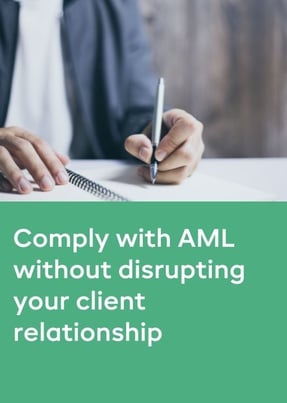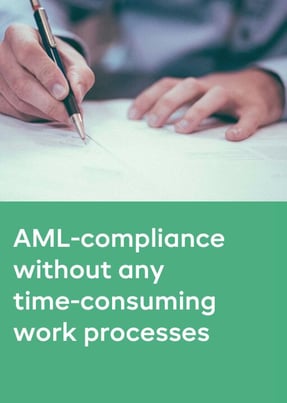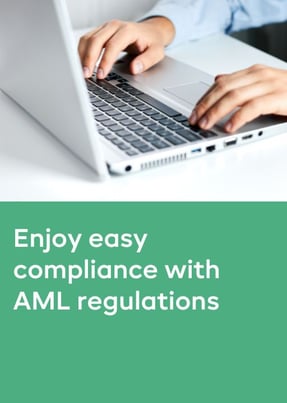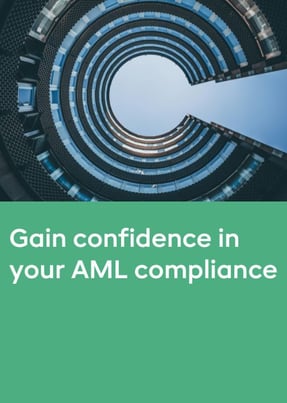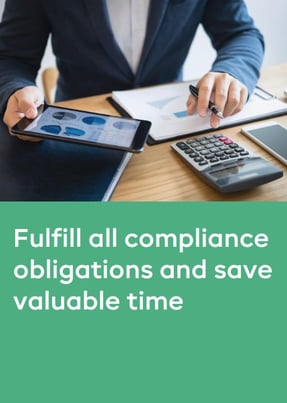- Products
- RegLab for ...
- Knowledge centre
Download the AML glossary >
 Discover the essential AML compliance terminology and gain instant access to a comprehensive guide
Discover the essential AML compliance terminology and gain instant access to a comprehensive guide - The company
Working at RegLab >
Join RegLab as the new Product Owner of our software tool and change the way the legal community approaches anti-money laundering.
There may not be any vacancies that perfectly match your profile, but that does not mean there is no room for someone who can improve RegLab.
- Book a demo
Do you include an AML paragraph in your engagement letter?
Question 8 from the supervisor
An important element of the supervisor’s audit involves the engagement letter. They may ask how the process is structured, whether an engagement letter exists for each matter, where it is stored, and whether an AML clause is included.
The same scrutiny often applies to the subscription agreement, particularly in investment-related matters. Like the engagement letter, this agreement must comply with AML requirements, including client identification and verification of the source of funds. Below is a summary of the key expectations.
Voda (Legal Profession Bye-Law) Article 7.5
According to Article 7.5 of the Dutch Code of Conduct for Lawyers (Voda), lawyers are required to issue a written engagement confirmation to their client upon accepting an instruction. This document serves as the contractual foundation, setting out the agreed terms and conditions. It must clearly state who the contracting party is on behalf of the lawyer, whether any external lawyers are involved in the matter, to which bar association the lawyer belongs, how the lawyer is insured for professional liability, and which office complaints procedure applies.
The purpose of this obligation is to avoid misunderstandings and disputes by clearly documenting all arrangements in advance.
It is therefore evident that an engagement letter is mandatory for lawyers. However, drafting the engagement letter is only a small part of the process. Many firms face recurring challenges such as timely sending of the engagement letter, receiving a signed version from the client, storing the document centrally and correctly, and keeping terms up to date, especially in long-running matters.
Even the best firms may encounter issues. A secretary may draft the engagement letter and send it to the lawyer for approval and further forwarding to the client. Due to workload, the lawyer may forget to send it, or send it without ensuring that the client signs and returns it. And even when the signed version is received, there is no guarantee it is properly stored in the central system. Nor is there always clarity on whether the content is accurate, current, and correctly addressed to the proper legal entity.
For these reasons, a clear and efficient engagement process is critical.
Integrating AML elements into the engagement letter
Beyond the Voda requirements, it is increasingly important for firms to include an AML clause in the engagement letter. A modern engagement letter should include a section that explains that the lawyer is subject to AML obligations, that certain client information will be requested for this purpose, and how the client’s personal data will be processed and protected. This section is essential, particularly when a supervisory authority asks whether AML has been properly addressed in the engagement letter.
Note: Subscription agreement replaces engagement letter for funds
In investment fund structures, a traditional engagement letter may not apply. Instead, these entities typically use a subscription agreement — a legal document through which an investor subscribes to participate in the fund.
Although a subscription agreement serves a different purpose, it is still an appropriate moment to be transparent about AML obligations. Ideally, the agreement should include a statement confirming that the fund is subject to AML laws, an explanation of why personal and identification data is collected and verified, information on how this data is protected and processed, and, where applicable, a reference to client due diligence or the investor’s assigned risk profile.
This is how fund managers can demonstrate AML compliance in a way that meets the expectations of the supervisory authority. Just as with engagement letters, it is important to store these agreements centrally and to monitor their signature status.
Automating the process with AML software
To optimise the engagement letter or subscription agreement process, specialised tools such as RegLab’s AML software can be highly effective. This software enables firms to automate the sending of engagement letters, centrally store related documentation, track the status of returned letters, automatically send reminders to clients with incomplete responses, generate status reports, centrally distribute and monitor updates to terms and conditions, and create a full audit trail for the supervisory authority at the press of a button.
This was the final article in the “100% AML-proof” series. After reading these articles, you should be well prepared for your next supervisory inspection.
Themed file: fully prepared for the supervisor’s audit
This article is part of a number of articles and downloads that will help you prepare yourself for the supervisor’s visit. This content is based on a supervisor's FAQs during an audit. Do you want to be 100% AML-proof and ready for the supervisor’s visit? Find all FAQs in our Knowledge Centre.
Knowledge centre
Download the whitepaper: "AML misconceptions"
We list ten myths about money laundering prevention and provide practical tips to improve your process.
